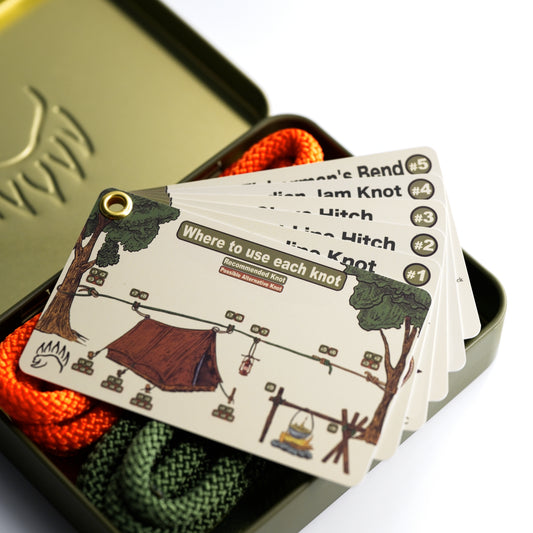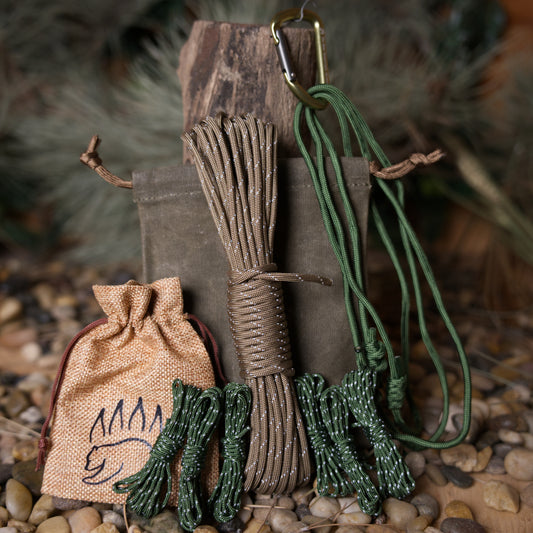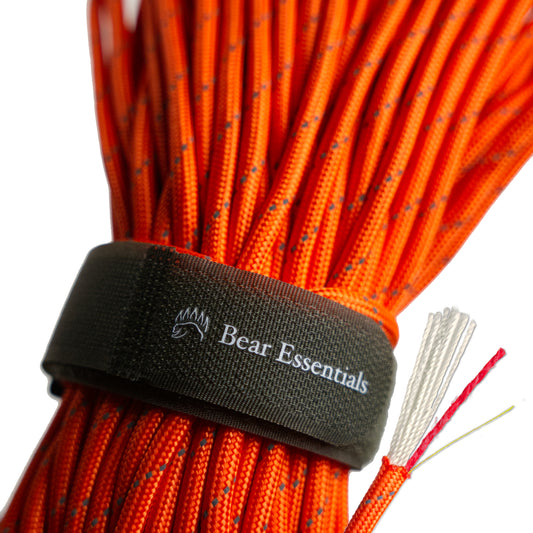How to Tie the Packer’s Knot
Usage
The Packer’s Knot is commonly used to bind parcels, bundles, or gear, particularly in utility tasks like packaging and camping for securing light loads.
Why Learn the Packer’s Knot?
Its simple design ensures reliable binding. This knot is a practical choice for anyone needing to secure parcels or gear in utility or outdoor settings.
Common Uses
-
Utility:
- Ties parcels, boxes, or packages for shipping or storage.
- Secures light bundles like cords or fabric in household tasks.
-
Camping:
- Binds gear, tarps, or bedrolls for compact packing.
- Ties ropes for temporary shelter setups or equipment storage.
ABOK Number
(Ashley Book of Knots)
Other Names
Category
|
Notable Features
- Secure hold: Grips bundles firmly for light to moderate loads.
- Easy to tie: Quick and simple, ideal for beginners.
- Versatile use: Suits packaging, camping, and household tasks.
- Compact knot: Uses minimal string, keeping bindings neat.
- Reliable for static loads: Holds well for temporary or stable setups.
Variations
No true variations are listed in the provided knot index. For quick release, a slipped version can be tied by tucking a bight instead of the working end, though it may be less secure.
Similar Knots
Butcher’s Knot vs. Packer’s Knot
- Pros: Faster to tie for meat binding or small parcels.
- Cons: Less versatile for general bundling compared to the Packer’s Knot.
Constrictor Knot vs. Packer’s Knot
- Pros: Extremely tight grip for permanent binding.
- Cons: Harder to untie and less suited for quick, temporary ties.
History
The Packer’s Knot, referenced in The Ashley Book of Knots (#409), likely originated in trade and shipping contexts where securing parcels and bundles was essential for transport. Its simple yet effective design made it a staple for packers and merchants. Its adoption in modern camping and utility tasks reflects its reliability for quick and secure binding in various settings.
Security Level
The Packer’s Knot is reliable for binding light to moderate loads, such as parcels or camping gear, when tied correctly. It offers a secure hold for static loads but may slip under heavy or dynamic tension. For slippery twine or critical tasks, adding an extra half hitch or using a non-slip rope can enhance stability.
Downsides
- Limited for heavy loads: May slip under significant tension or dynamic movement.
- Not quick-release: Requires untying, unlike slipped variations.
Structure
- Wrap the string or rope around the bundle, crossing the working end over the standing part.
- Form a loop by passing the working end under the standing part and around the bundle again.
- Pass the working end through the loop, creating a half hitch around the standing part.
- Pull the standing part and working end to tighten, ensuring the knot is snug.
- For added security, tie an additional half hitch or square knot with the working end.
Pro Tip: Use strong, flexible string like nylon or cotton twine for a secure hold.
FAQ
Is the Packer’s Knot strong enough for heavy loads?
It’s suitable for light to moderate loads like parcels, but not for heavy or critical tasks.
What string works best for the Packer’s Knot?
Strong, flexible string like nylon or cotton twine ensures a secure hold.
How does the Packer’s Knot compare to the Butcher’s Knot?
It’s more versatile for general bundling but slightly less specialized for meat.
Can the Packer’s Knot be used for camping gear?
Yes, for securing gear or tarps, but not for heavy or dynamic loads.
Why choose the Packer’s Knot over the Constrictor Knot?
In the constrictor knot comparison, it’s easier to tie and untie, making it better for quick, temporary binding.
Important Notes on Safety
Common failure points include using slick twine or insufficient tension, which can cause slipping. Always verify the knot is used for appropriate tasks and correctly tied.
Inspect the string for wear or damage before tying.
Ensure the knot is snug and the bundle is stable before relying on it.
Practice tying in low-risk settings to ensure proficiency.









